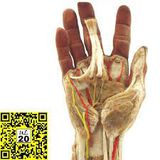

What are the Rinne’s and Weber's tests and why are they used?
To differentiate between conductive and sensorineural hearing loss the clinical tests available are rinne's and weber's test. Rinne's test compares air conduction of the ear to bone conduction. Air conduction assesses ear canal and ear drum. Bone conduction assesses nerve. Rinne's is done by striking a tuning fork and placing it on mastoid bone and waiting for the patient to signal when they stop feeling the vibration and then moving the fork to the ear and asking when the patient stops hearing the vibrations. This time is recorded and interpreted. Weber's test is done by placing a vibrating tuning fork in the middle of the head and asking to which ear the sound is heard more or if it is equal. Normally air conduction is two times more than bone conduction. In conductive hearing loss bone conduction is longer than the air conduction. In sensorinural hearing loss air conduction is more than bone conduction in rinne's test. Normal weber’s is equal in both ear while in conductive hearing loss causes weber to be lateralized towards abnormal ear and in sensorinural hearing loss weber is heard better in normal ear.

